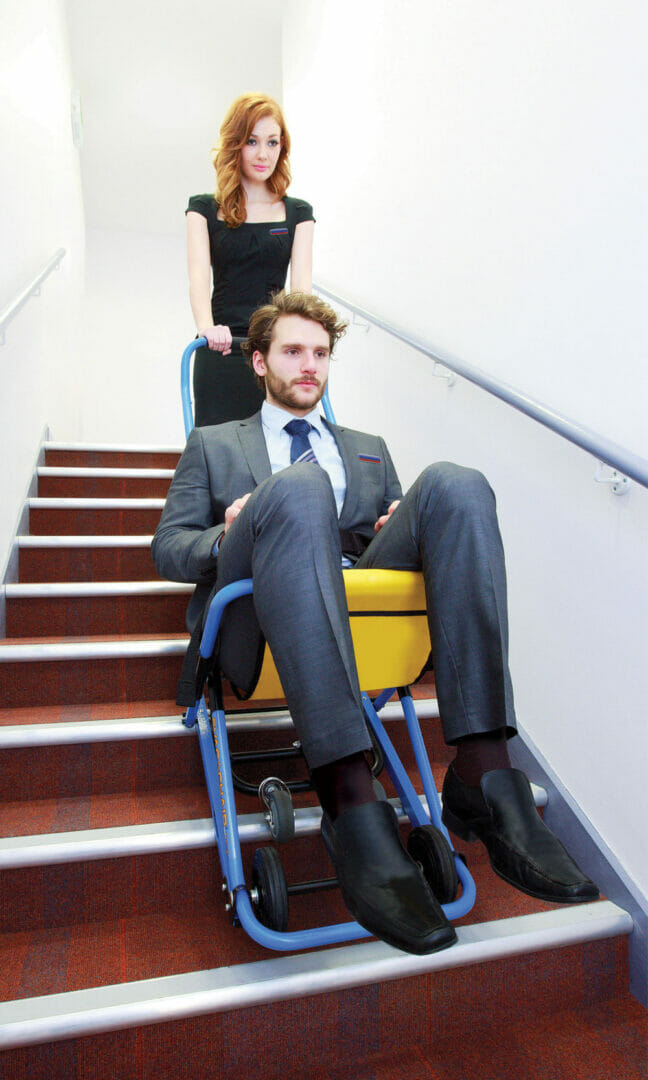
Many major cities, throughout the UK, are experiencing significant investment in both new and refurbished buildings.
Deloitte’s Regional Crane Surveys 2019 highlight that in Birmingham, Manchester and Leeds respectively there are over 1.4m, 2m and 800,000 ft2 of office space and over 5,000, 14,400 and 2,200 residential units currently under construction across those cities.
Of course, not all developments are new-builds. Many inner-city developments are seeing heritage buildings and warehouses repurposed into office space, residential units or retail space.
This substantial investment represents unprecedented transformation of our cities and their future economic prospects. However it is important that these developments take into account emerging areas of risk associated with the built environment.
Safer developments
In its White Paper The Changing Nature of Risk, UK manufacturer of evacuation chairs, Evac+Chair, examined the evolving risk landscape for multi-storey buildings – both old and new. This paper was – based on the findings from a roundtable event with leading health & safety and facilities management professionals.
The paper considers emerging evacuation risk factors such as technology, building design and terrorism – highlighting what is driving best practice and providing top tips and guidance on how organisations should respond.
In December 2018, the government announced detailed plans to strengthen the regulatory framework for building safety. The implementation plan follows the recommendations made by Dame Judith Hackitt’s, Independent Review of Building Regulations and Fire Safety , published in May 2018, in response to the fire at Grenfell Tower in 2017.
Building a Safer Future: An implementation plan involves establishing a Joint Regulators Group, comprising key regulatory partners (HSE, Local Authority Building Control, the Fire and Rescue Services and the Local Government Association). The group will pilot new approaches and assist with the transition to a tougher and more rigorous regulatory framework. This will be backed by stronger oversight and sanctions to enforce and improve accountability.
Crucially, the new regime aims to ensure buildings are safe via clearer standards and guidance. It also calls for a culture change which increases responsibility for building safety and raises the rigour of product labelling, testing and marketing.
Building developers will need to be explicit about how safety is incorporated in their buildings, provide a clear set of gateway points to engage with the regulators and offer transparent recording and handover of safety information. For their part, building owners will need to reassure occupants by providing them with better information about the protection measures in place in their buildings.

Building on the implementation plan
Further consultation on the implementation plan during spring 2019 will inform ongoing research and input from the Joint Regulators Group. Importantly, the Government will be consulting on the scope of the new regime and whether it should go further to include other multi-occupied residential buildings where a significant fire or structural failure could put many people’s lives at risk.
Seeking views on proposals for creating duty holder responsibilities, the consultation will set out, in law, who owns and needs to manage building safety risks at different stages of a building’s lifecycle. The proposed law will create a stronger and more effective enforcement and sanctions regime. It will make statutory consultees of fire and rescue authorities in the planning process for multi-occupied, residential buildings of 30 metres or more (circa 10+ storeys).
Scrutiny of safety – not just in residential high-rises but in all multi-storey buildings – is very timely and has the potential to protect occupants of existing, new and refurbished buildings throughout the UK, whatever their use.

Managing risk today
The Equality Act (2010) prompted continuous improvements in building design and accessibility to ensure that both work and living spaces are as inclusive and accessible as possible.
This means, people who are mobility-impaired, now have greater opportunities to access and move around buildings, which increases the need for people-centred emergency and evacuation planning.
To ensure the needs of all building occupants are accounted for, those who are mobility-impaired must be identified and planned for.
Currently, a Personal Emergency Evacuation Plan (PEEP) should be devised by a building’s responsible person in order to comply with the Regulatory Reform (Fire Safety) Order (2005). This states how each responsible team member must be aware of their role in the event of an emergency and be educated to ensure every person is evacuated safely from a building.
The PEEP should consider all those who are mobility-impaired, hearing-impaired or visually-impaired. In particular, it needs to consider who will support them in the event of an emergency and what additional training and equipment is required.
Emergency evacuation is not a ‘one-size’ fits all approach and greater care needs to be taken to protect all building’s occupants now and in the future.
To ensure your emergency evacuation procedures comply with best practice, find out more or sign up for a free site visit: www.evacchair.co.uk/evacuation-chair-site-survey/ or call 0121 720 9024.
